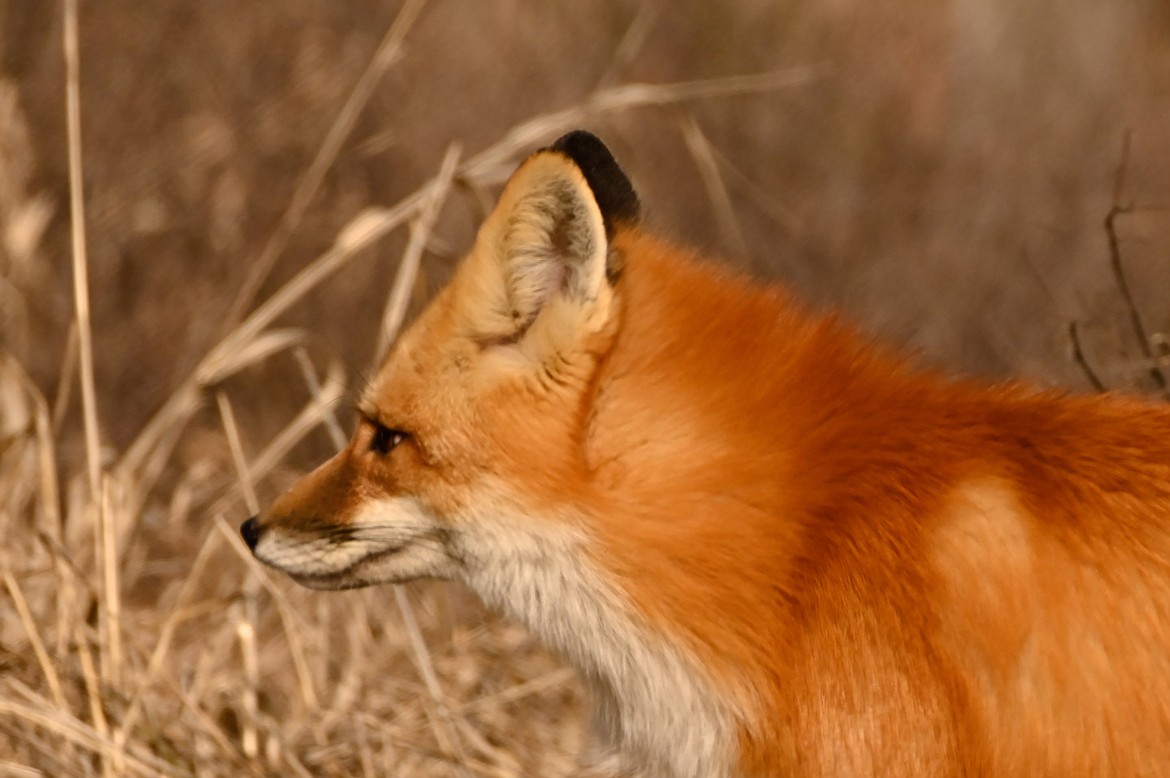The adaptable and cunning red fox
“The sleeping fox catches no poultry.” Benjamin Franklin (1709-1790)
Sly, curious, sneaky, and clever are words that have been used to describe the red fox. Well, red foxes may appear “sneaky” or “clever,” but it may just be humans not understanding their shy and nervous habits.
Red foxes will sometimes crouch low to the ground and walk slowly. They are not trying to be “sly.” They are actually trying to go unnoticed as they look for something to eat. Red foxes may look a bit like a cat when hunting. They move very slowly or stand still listening for a mouse.
When they hear the mouse, they suddenly jump up into the air and pounce on the mouse with their front paws. Red foxes have an amazing sense of hearing. They can hear a mouse squeak from 150 feet away.
Red foxes eat a lot of small rodents, like mice, but they also eat rabbits, birds, insects, and dead animals. They will even eat fruits and vegetables from people’s gardens. Red foxes are omnivores; they will eat just about anything. This allows them to live in many different places.
The red fox (Vulpes vulpes) is distributed across most of North America. The most characteristic trait of this species is its colorful coat. It’s most well-known for being red with a pale underbelly, a white tip on the end of the tail and black feet and ear tips. Red foxes are not always red and there are many variations to the color of his coat. Some foxes come with a coat of black, gray, silver, or on rare occasions, even almost white! They’ve also been known to be a mixture of all these colors. Red foxes are just over a foot or two in height and measure three feet long or so. They typically weigh 30 pounds or less.
Despite being members of the canine family, they are only distantly related to your pet dog. In many ways, they actually act more like cats than dogs! Foxes are the only members of the canine family that can climb trees. They are mostly active after dark, when their vertical cat-like pupils aid their eyesight.
If you’ve ever watched your cat hunt, then you already have a good idea of how red foxes capture prey. They stalk the trails of their prey before pouncing upon unsuspecting small mammals, like rodents and rabbits, birds, fish and frogs. Their fluffy tail acts as a balance while pouncing or running, again, like a cat. Foxes are not particularly fussy eaters though and will also scrounge up worms, insects and fruit.
Red foxes usually live alone or in small family groups. To tell other foxes a home is taken, red foxes mark their territory with urine, scat or scent from scent glands. Red foxes have scent glands on their rear ends, lips, jaws and feet. They also use sounds to communicate with each other. Scientists have recorded 28 different sounds that red foxes make.
Fox kits, or babies, are born in a den. Usually, red foxes only use a den to give birth and care for their young. The rest of the year they curl up in a ball and place their tails over their bodies to stay warm. Red foxes have a built-in blanket!
Young foxes are known as kits and they are born between March and May. Red foxes have between 1-10 kits in each litter, that weigh about two ounces each. They spend the first four or five weeks in the den being nursed by their mother. The male fox will bring the mother food when she is in the den with the kits. Kits come out of the den and start to explore the world around them at about five weeks of age. This is when they start to learn to hunt by watching their parents. By 12 weeks, they can hunt on their own and leave to find their own place to live.
Keep an eye out for red foxes in Boundary County. You are most likely to see them during dawn, dusk or at night. You may even see one in the country or outside of Bonners Ferry nervously looking for something to eat.



